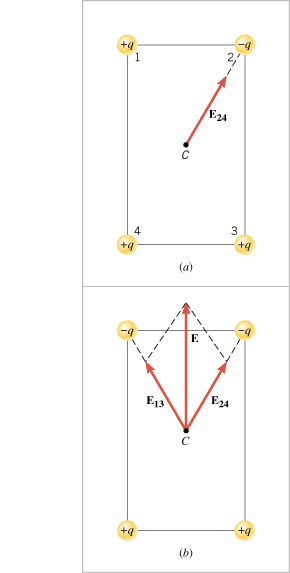Figure 18.21 shows point charges fixed to the corners of a rectangle in two different ways. The charges all have the same magnitudes, but they have different signs. Consider the net electric field at the center C of the rectangle in each case. Which field is larger?
 |
|
Reasoning and Solution In Figure 18.21a, the charges at corners 1 and 3 are both +q. The positive charge at corner 1 produces an electric field at C that points toward corner 3. In contrast, the positive charge at corner 3 produces an electric field at C that points toward corner 1. Thus, the two fields have opposite directions. The magnitudes of the fields are identical because the charges have the same magnitude and are equally far from the center. Therefore, the fields from the two positive charges cancel.
Now, let’s look at the electric field produced by the charges on corners 2 and 4 in Figure 18.21a. The electric field due to the negative charge at corner 2 points toward corner 2, and the field due to the positive charge at corner 4 points the same way. Furthermore, the magnitudes of these fields are equal because each charge has the same magnitude and is located at the same distance from the center of the rectangle. As a result, the two fields combine to give the net electric field E24 shown in the drawing.
In Figure 18.21b, the charges on corners 2 and 4 are identical to those in part a of the drawing, so this pair gives rise to the electric field labeled E24. The charges on corners 1 and 3 are identical to those on corners 2 and 4, so they give rise to an electric field labeled E13, which has the same magnitude as E24. The net electric field E is the vector sum of E24 and E13 and is also shown in the drawing. Clearly, this sum is greater than E24 alone. Therefore, the net field in part b is larger than that in part a.
Related Homework: Conceptual Question 12 , Problem 34